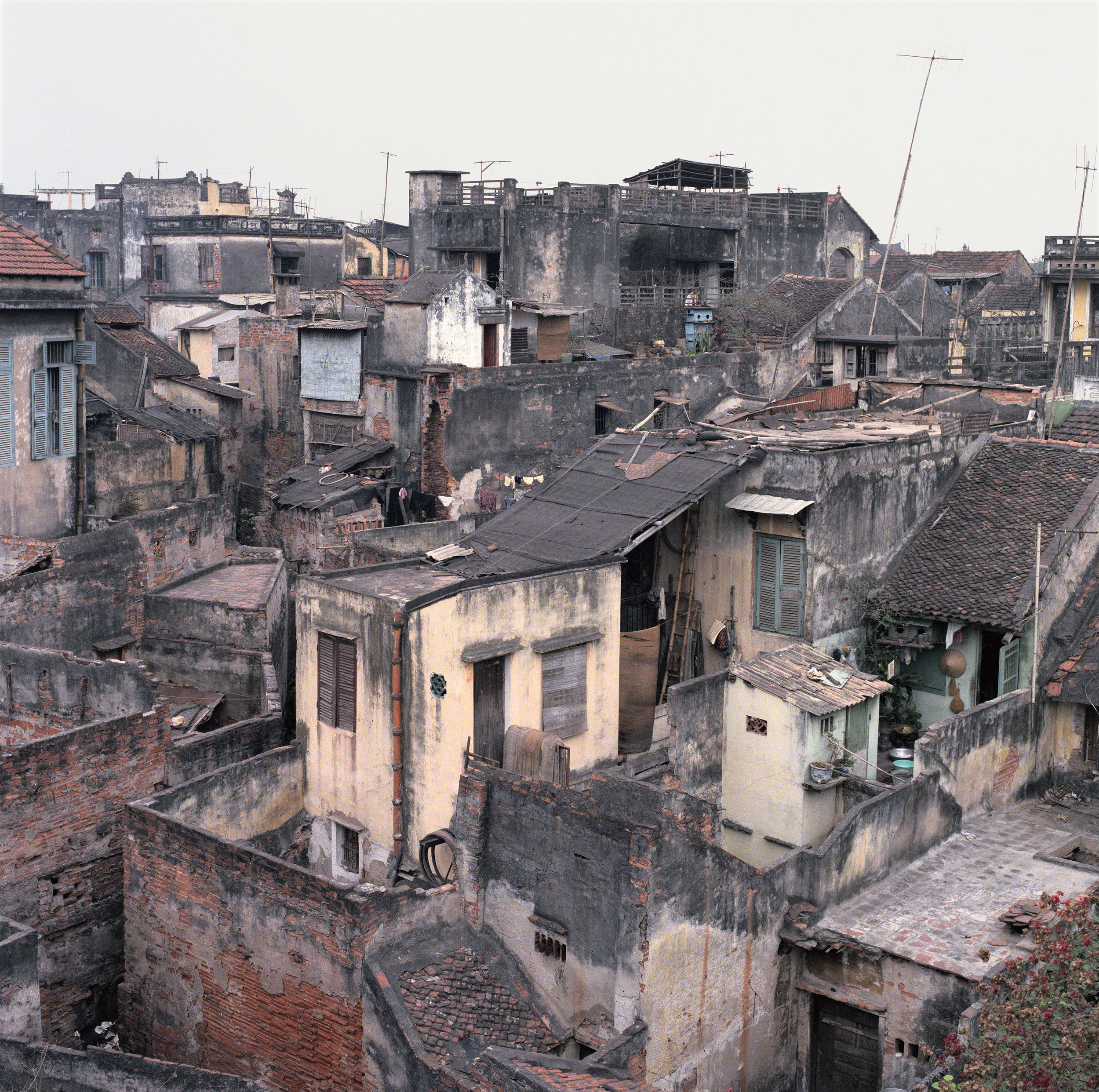Book Review: Hanoi Streets 1985-2015 by William E. Crawford
View from Đinh Liệt, 1986 Photography and Writing © William E. Crawford, 2018
By Maura Monaghan
When photographer William Crawford first arrived in Hanoi in August 1985, it was a city on the brink of transformation. Left isolated and decrepit by years of Communist policy, Hanoi was proof that economic strategies in North Vietnam desperately needed updating. The modernizing and globalizing effects of the resulting doi moi reforms, introduced in 1986, made the city a place of notable change. In his book Hanoi Streets 1985-2015, Crawford endeavors to document that change over the course of 30 years.
The book begins with photos taken in the latter half of the 1980s. Some are urban landscapes; some are portraits. A consistent layer of gray permeates these images, giving each a subdued mood and linking them in tone as well as in time.
However, the book doesn’t strictly follow a chronological order. There are occasional jumps between decades, perhaps to prompt readers to juxtapose the images. Pictures from the 1990s and early 2000s are more colorful than the preceding images, but hues are still muted. From 2005 onwards, most of Crawford’s urban landscape photos are much brighter.
121 Kim Mã, 2005 © William E. Crawford, 2018
The mixing of decades seems to suggest that change can be constant without being linear. In these pages, the booming business of late-20th century Hanoi looks vibrant and exciting, but Crawford’s multidimensional examination also reminds us of what is lost in the reform process. One photo, of a square building carved with medallions for Happiness, Longevity and Wealth, is accompanied by the footnote “Torn down in 2005. Became a sushi bar.”
Crawford pays a lot of attention to Hanoi’s unique architecture in this collection. Indigenous architecture is crowded in with influences from China and, much later, the Soviet Union. French colonialism in the first half of the 20th century meant that the Parisian Beaux-Arts style was also a huge presence in Hanoi well into the 1980s. “It’s the artless combination of styles and references that makes Hanoi so visually entertaining,” Crawford writes; “Restraint is boring.” The primary building technique in Vietnam was to layer stucco over mortared brick, and those materials faced years of neglect that led to the state of dilapidation pictured below.
54 Hàng Ga, (Chicken Street), 1994 © William E. Crawford, 2018
Equally as striking as Crawford’s landscape photography are his portraits. Each time a subject makes eye contact with the camera, readers are reminded that the heart of a city is always its people. By presenting these profiles alongside photos of Hanoi itself, Crawford contextualizes the lives that we are so briefly glimpsing.
Motorbike and Bicycle Going Home, 1987 © William E. Crawford, 2018
Hanoi Streets is ultimately a study of dynamism and influence, and how those factors have interacted with one city over the course of 30 years. Crawford’s interest in and dedication to the project is evident, and these photos evoke a strong sense of place–no small feat, considering the mutability of the place in question.
These images are copyright William E. Crawford from the book Hanoi Streets 1985-2015: In the Years of Forgetting photographs and text by William E. Crawford. The book is published by Images Publishing. https://www.amazon.com/Hanoi-Streets-1985-2015-Years-Forgetting/dp/1864707860/ref=sr_1_1?ie=UTF8&qid=1528803871&sr=8-1&keywords=William+E.+Crawford+Hanoi+Streets











